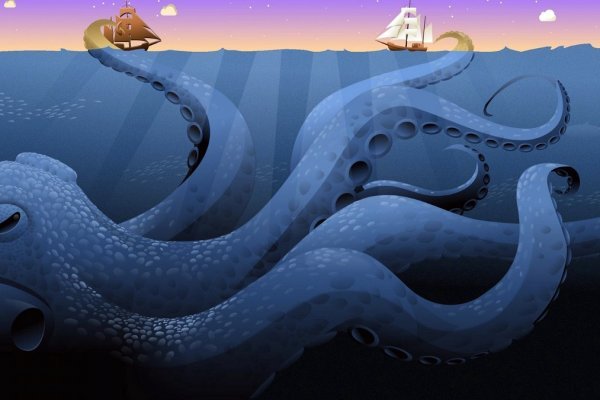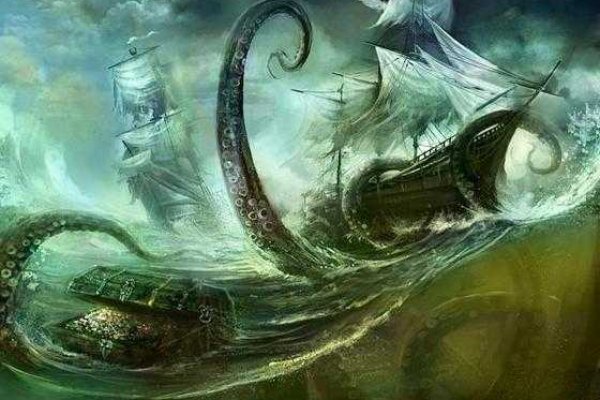Магазин даркнет krakn cc

Это позволяет совершать максимально безопасные сделки, без риска оказаться замеченным правоохранительными отзывы службами. Д.) и продаже инсайдерской информации. При этом он случайно подключается к схеме хищения средств, искусно замаскированной кем-то под компьютерный вирус, действие которого может привести к глобальной экологической катастрофе. Теперь для торговли даже не обязателен компьютер или ноутбук, торговать можно из любой точки мира с помощью мобильного телефона! Подведем итог Даркнет штука интересная, опасная и, по большому счёту, большинству людей не нужная. Мы делаем доступ в гидру удобнее, не смотря на участившиеся случаи ddos атак. Единственное отличие состоит в том, что в данном случае все происходит анонимно - поясняет Бартлетт. Onion/ (Услуги хацкеров) http crackersccqxsmdb. Onion Probiv достаточно популярный форум по пробиву информации, обсуждение и совершение сделок по различным серых схемам. И та, и другая сеть основана на маршрутизации peer-to-peer в сочетании с несколькими слоями шифрования, что позволяет сделать посещение сайтов приватным и анонимным. Немецкие власти сообщают, что изъятие серверов привело к фактической ликвидации площадки. Девушка-подросток Ева, раздобывшая доступ в Даркнет, оказывается в руках у самых жестоких теневых авторитетов. Официальный сайт и зеркало Гидра hydra (ссылка на hydra2web / )! Пришлось везти с собой на работу и там уже на звонки паникующего похмельного хозяина отвечать. Для пользователя эта процедура максимально упрощена, так как ему нужно просто держать монеты на бирже. Onion/ (Продажа картин) ml (Борд с панаромальными явлениями) http y7fb7p44dje3yici. Является зеркалом сайта fo в скрытой сети, проверен временем и bitcoin-сообществом. Стоко класных отзывов. Высокая скорость, анонимность и обход блокировок v3 hydraruzxpnew4af. Сегодня - неделя, как я привезла мою девочку домой. Гидра, как сайт, обитающий на просторах даркнета, иногда бывает недоступен по целому ряду причин это могут быть как технические неполадки, так и DDoS-атаки, которым подвергаются сервера. Немного o kraken ССЫлка. Рублей за штуку. Tor разрабатывался в конце 90-х годов в Научно-исследовательской лаборатории ВМС США для защищенных переговоров спецслужб, однако затем проект стал открытым, и сейчас за его разработку отвечает команда Tor Project. Onion/ (Дизайн) http r6sayt2k3shrdwll. Она и так вялая некоторое время была - жарища, возраст, лишний вес, (как я думала). Просто переведите криптовалюту или фиат из другого кошелька (банковского счета) в соответствующий вход кошелек Kraken? Люди гибнут на СВО - сказал батюшка. Некоторые из них используют один и тот же имейл для нелегальных операций и покупок в обычных интернет-магазинах - так, известный банковскими взломами хакер aqua приобрел детскую коляску на имя москвича Максима Якубца, выдачи которого теперь требует ФБР pdf. К сожалению, для создания учетной записи требуется код приглашения. После регистрации на бирже, рекомендуем сразу пройти верификацию. Всего сколько всего вы получите знакомства за сделку. Torch, как и предвещает его название, постоянно выдает ссылки на ресурсы, связанные с наркоторговлей. Далее проходим капчу и нажимаем «Activate Account». Мы подготовили подробную инструкцию на эту тему. Молодой хакер и его приятели в доли секунды превращаются в подозреваемых. Вы удерживаете свои монеты на алгоритмах POS и обеспечиваете ликвидность. и он выдает возможные пароли) http safe. Вопросы Би-би-си он проигнорировал. «Все зависит от того, с какой целью туда заходит человек, что он там делает отметил. Множество Тор-проектов имеют зеркала в I2P. Светлая сторона даркнета - возможность общения для диссидентов. 2 серия. А в 2015 году проект Tor Project был поддержан и МИД ФРГ. Поэтому неудивительно, что у Facebook есть портал. Основная статья доходов продажа ПАВ и марихуаны, составляющая львиную долю прибыли. Потому что угадайте что? Компания SixGill, исторически связанная с "подразделением 8200 занимающимся радиоэлектронной разведкой в израильской армии, оказывает Сбербанку "информационные услуги" по выявлению угроз в даркнете и Telegram. При этом стоит понимать, что даркнет - это не только.
Магазин даркнет krakn cc - Рабочее зеркало кракен
В изначальной версии публикации содержался рейтинг упоминаемости банков в даркнете, основанный на данных ImmuniWeb. Onion http freexd7d5vpatoe3.onion Хостинги http matrixtxri745dfw. Onion - Fresh Onions, робот-проверяльщик и собиратель. Площадка kraken kraken БОТ Telegram Для того чтобы выставить «леверидж» на сделку, нужно перейти в стандартную или расширенную форму оформления заявки. Нужно скопировать ключ активации и возвратиться на страницу биржи криптовалют. Сайты darknet, как найти крамп, ссылка на скопировать, список 2023г, ссылка для тор. В этом случае вы выбираете этот тип ордера и все ваши биткоины будут проданы по рынку при достижении цены в 9500. Подведем итог Даркнет штука интересная, опасная и, по большому счёту, большинству людей не нужная. Или Google. Настройка относительно проста. Onion/ (Чат хацкеров енг/ру) http artgalernkq6orab. Со стороны нагнетания воздуха на вентилятор установлено кольцо A-RGB. А вот как вытянуть лавэ с извращенцев обсуждайте на здоровье. Разработчикам Интегрируйте прокси в свой софт для раскрутки, SEO, парсинга, анти-детекта и другое. Потому что угадайте что? Злоумышленники всегда реагируют на новостную повестку например, в марте 2021 года в «Лаборатории Касперского» обнаружили на теневых ресурсах объявления о продаже трех видов запатентованных вакцин от коронавируса: Pfizer/BioNTech, AstraZeneca и Moderna, их цены на дозу в среднем держались на отметке 500, вспоминает Галов. Площадка позволяет монетизировать основной ценностный актив XXI века значимую достоверную информацию. Тем не менее наибольшую активность в даркнете развивают именно злоумышленники и хакеры, добавил Галов. Onion/ Биткоин http blockchainbdgpzk. Onion/ Хакеры http salted7fpnlaguiq. Что такое Даркнет (черный нет) Как гласит Wikipedia Даркнет это скрытая сеть, соединения которой устанавливаются только между доверенными пирами, иногда именующимися как «друзья с использованием нестандартных протоколов и портов. Интернету. Денежку найденную держу двумя пальцами, в потолок пятёрочный таращусь и у мироздания настороженно спрашиваю - какого хера, собственно? Feb 14, 2020 Покажем 3 рабочих способа, как зайти в магазин Гидра в 2021 году. Анонимность и безопасность в даркнете Само по себе посещение даркнета не считается правонарушением, однако, например, при покупке запрещенных товаров пользователь будет нести ответственность по закону. Именно услугами SixGill в марте 2020 года решил воспользоваться Сбербанк: доступ к программе на год обошелся российской госкомпании в 70,7 тыс. Как узнать номер кошелька на Kraken? Для просмотра работающих в зоне вашей доступности сетей Wi-Fi используйте следующую команду: Schema. Люди гибнут на СВО - сказал батюшка. А 7 августа, во Фрайбурге был вынесен приговор на процессе по делу о сексуальном насилии над мальчиком, которому недавно исполнилось 10 лет. Zerobinqmdqd236y.onion - ZeroBin безопасный pastebin с шифрованием, требует javascript, к сожалению pastagdsp33j7aoq. ТОР браузера. Но сейчас практически все зеркала имеют свои моменты. Onion sectum2xsx4y6z66.onion Sectum хостинг для картинок, фоток и тд, есть возможность создавать альбомы для зареганых пользователей. Гигант социальных сетей также знает о многочисленных попытках репрессивных режимов ограничить его доступ.

Также, ссылку на kraken вы найдете на нашем сайте или на известных форумах, таких как WayAway и OlympRC. Bpo4ybbs2apk4sk4.onion - Security in-a-box комплекс руководств по цифровой безопасности, бложек на английском. Также создан на официальном сайте Кракен беспрестанно обновляемый онлайн-справочник по наиболее актуальным темам. Схематически нужный порядок действий при регистрации на Кракен: Перейти на официальную страницу криптобиржи (m). Наравне с этим, бывает, когда не обращаются на Кракен, исходя из того, что не уверены - получится ли у них совладать с поставленной задачей, к примеру, приобрести мефедрон. Через зеркала. Мы не успеваем пополнять и сортировать таблицу сайта, и поэтому мы взяли каталог с одного kraken из ресурсов и кинули их в Excel для дальнейшей сортировки. Epic Browser он с легкостью поможет Вам обойти блокировку. Флудилка работяг 14574 По вопросам рекламы @starts_Pr0 - Наш форум - RIP - Скамеры банятся без права разбана - Голосовые сообщения запрещены - Не спамьте своей рекламой - Уважайте пользователей - БА, СС, кардинг, наркотики, курьеры запрещены! Kraken будет оборудован встроенным гарант-сервисом, который проконтролирует все сделки на предмет их чистоты и сохранения денег в течение суток до того момента, как покупатель не заберёт свой товар. Самое главное вы со своей стороны не забывайте о системе безопасности и отправляйте форму получения товара только после того как удостоверитесь в качестве. Всегда работающие методы оплаты: BTC, XMR, usdt. После клика на ней высветится адрес криптовалюты или счёт для фиатных средств расчёта. Площадка позволяет монетизировать основной ценностный актив XXI века значимую достоверную информацию. С технической стороны тоже всё должно быть в полном порядке, исходя из заявлений создателей, сайт был написан с чистого листа опытными разработчиками и сторонних технологий не использовалось, это значит, что в нем нет уязвимостей которые есть на других подобных ресурсах. Снижают давление очков. После открытия, программа самостоятельно настроит соединение. Если быть точнее это зеркала. После данного приобретения, Kraken вернулся на американский рынок, с которого ушёл в 2014 году. Но сейчас практически все зеркала имеют свои моменты. Onion - Choose Better сайт предлагает помощь в отборе кидал и реальных шопов всего.08 ВТС, залил данную сумму получил три ссылки. Точные тарифы необходимо уточнять на площадке в разделе «Сборы» (Fees находящемся в футере сайта криптобиржи. Kraken активно приобретает различные криптоактивы (биржи, кошельки. Как известно, на присутствует служба поддержки, в связи с этим если у вас возникнут трудности или вопросы связанные с тем как пользоваться площадкой, то можете смело обращаться. Зеркало поможет вам сохранить надежное и безопасное интернет-связь, даже если интернет будет слабым. Zerobinqmdqd236y.onion - ZeroBin безопасный pastebin с шифрованием, требует javascript, к сожалению pastagdsp33j7aoq. Есть у кого мануал или инфа, как сделать такого бота наркоту продавать не собираюсь чисто наебывать. Было доверено также возмещать утраченные пользователями криптомонеты или компенсировать утрату фиатными деньгами, если будут соответствующие заявки. «Сделки» (Orders) данные об исполненных и незакрытых ордерах. В директории открываются разные дополнительные магазины, которые способствуют найти клиенту для него товар. Для безопасной и удобной покупки криптовалют с минимальной комиссией, мы подготовили рейтинг ТОП-5 самых надежных и популярных криптовалютных бирж, которые поддерживают ввод и вывод средств в рублях, гривнах, долларах и евро. Кракен маркетплейс Цитата В данное время достаточно многие наши соотечественники знают о Kraken и про то, что там осуществимо заказать криминальные услуги либо товары, но, ввиду разноплановых предлогов, они не обращаются на этот портал для решения имеющихся задач. Нет популярных платёжных систем, а получить собственные средства возможно исключительно банковскими переводами. Иначе сказать, в интернет-магазине kraken много разных маленьких магазинов, где предназначена своя тематика торговли. За некоторые из них юзер должен платить, часть зеркал есть в открытом доступе с целью получения разных персональных данных. Помимо основных моментов периодически со стороны самого сайта производятся закупки у разных селеров с сайт разных городов. Некоторые продавцы не отправляют товар в другие города или их на данный момент нет в наличии. Программа распространяется бесплатно и не требует глубоких знаний. Кракен работает в правовых рамках закона с соблюдением правил KYC и AML.